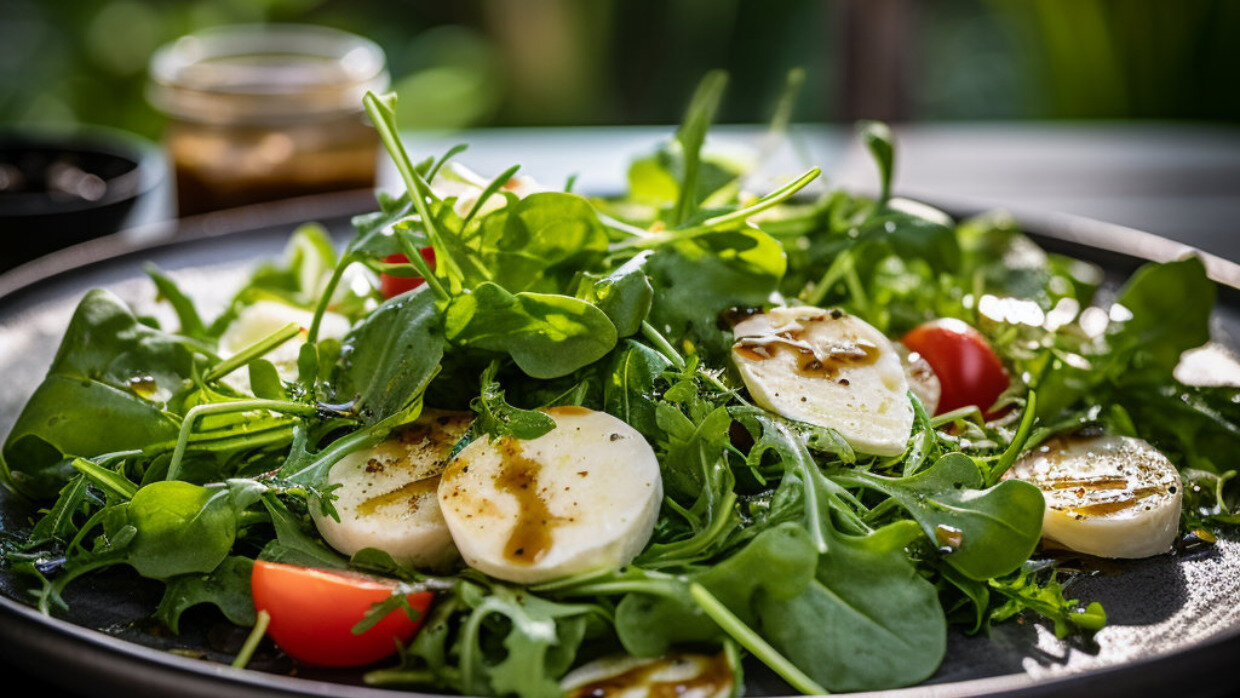The Jewish month of Tishrei (which usually falls between September and October) features many traditional foods, from honeyed apples to pomegranates, to leek patties and kreplach; the year starts with tasty and sweet dishes.
On Sukkot we eat outside in the Sukkah and we shake the lulav and etrog, also called the Arba minim which translates to four species. These plant parts are shaken together every day of Sukkot, except for Shabbat. To learn more about how to do this click here.
Recently my friend Sara Cross asked me, "What if there were an arba minim salad?" And with that question this salad was born.
Constructing the salad
Etrog
The etrog is a type of citrus fruit. In a sense it’s the bumpy grandfather of the lemon, as it is “one of the oldest cultivated citrus plants,” according to Jeff Spurrier’s 2013 LA Times article “Growing the etrog citron, a tree full of symbolism.” The midrash Vayikra Rabba 30:12 says this fruit has both taste and smell and can therefore be compared to Jews with both good deeds and Torah knowledge.
There are two reasons why I will not use an actual etrog for this recipe. One, etrogim are expensive. Two, most of the etrogim sold today are not safe for consumption; this is because the biblical commandment calls for the “the fruit of a beautiful tree.” Since the beauty of the fruit is the most important part of the etrog, more important than even the taste, the trees are sprayed with lots of chemicals to keep bugs from ruining the fruits.
One may wonder how this is possible when so many people make etrog jam, but that’s the topic of another recipe, at another time. To me the obvious equivalent for my salad is lemon juice.
Lulav
The lulav is a long, green and closed branch of a date palm. According to the midrash I mentioned before, the date palm “has taste and has no smell,” which symbolizes Jews who “have good deeds but do not have Torah.” (Midrash Vayikra Rabba 30:12). I chose canned hearts of palm and date syrup for sweetness, to represent the lulav.
Hadassim
The midrash continues that myrtle branches, or in Hebrew hadassim, have no taste but have a good smell. Jews who are like the hadassim have lots of Torah knowledge but no good deeds. I figured thyme would work as a substitute. In fact, it looks like a miniature version of the real deal. Although most of the myrtle is edible, I haven’t seen these parts in grocery stores. Thyme does have some taste, although it is mild. Rosemary could work too but it has a stronger taste.
Willows a.k.a. Aravot
The aravot are willow branches without taste or smell that the midrash says represent Jews that have neither Torah nor good deeds. Bundled into the arbat haminim with the aforementioned plants, the aravot show how important unity is among the Jewish people. Without them the blessing over the arbat haminim can't be recited. Arugula salad will act as a stand-in in my recipe, as it is of similar shape, and doesn't have a strong smell or taste. Baby spinach could be used too if arugula is not available.
Ingredients
- 1 14 oz can hearts of palm
- ½ tablespoon silan date syrup
- 2 cups arugula
- Handful cherry tomatoes optional
- 1 ½ tablespoon lemon juice fresh pressed if possible
- 3 small stems fresh thyme or 1 teaspoon dried thyme
- ¼ tablespoon salt or more to taste
- 2 tablespoons olive oil
Nutritional Facts
Instructions
- Drain and cut the heart of palm into bite-sized pieces.
- Wash thyme and remove leaves from stems.
- In a medium-sized bowl mix the silan and lemon juice until combined. Add olive oil, salt, and thyme. Mix well.
- Wash and dry the arugula. Add the arugula and the hearts of palm to the bowl and toss all ingredients together. Enjoy!
















What are the four species in this salad?